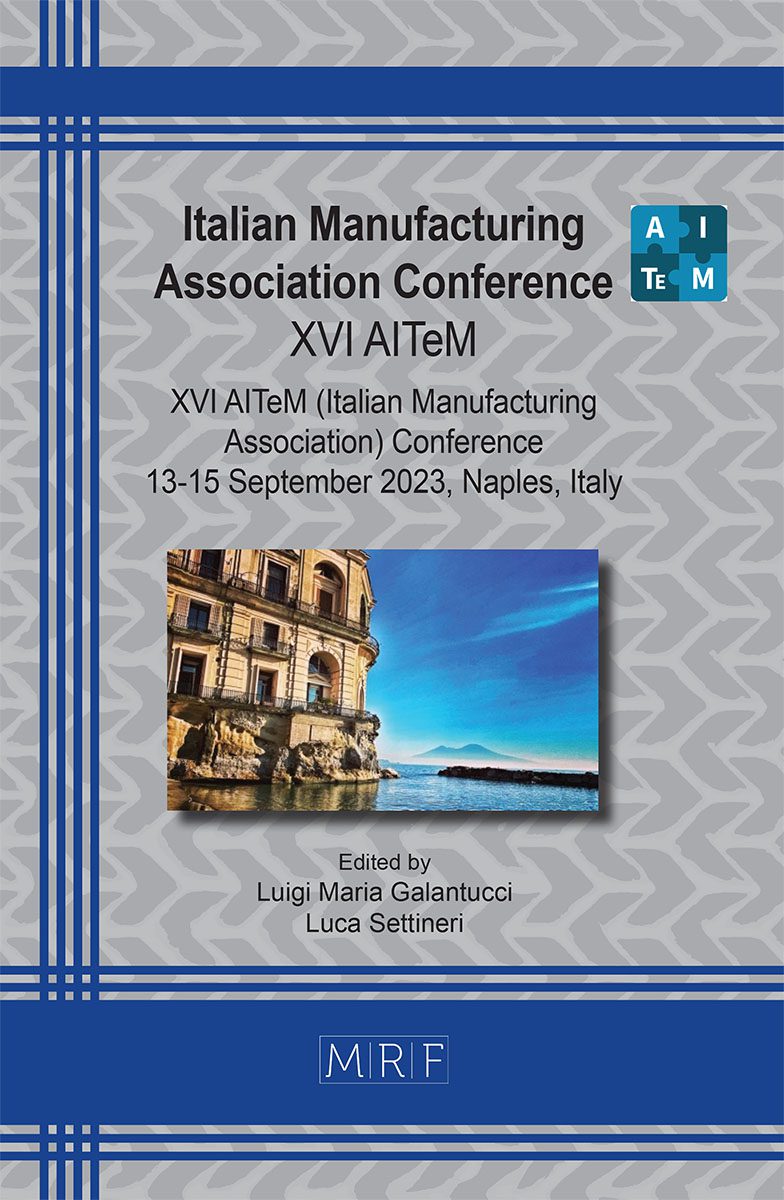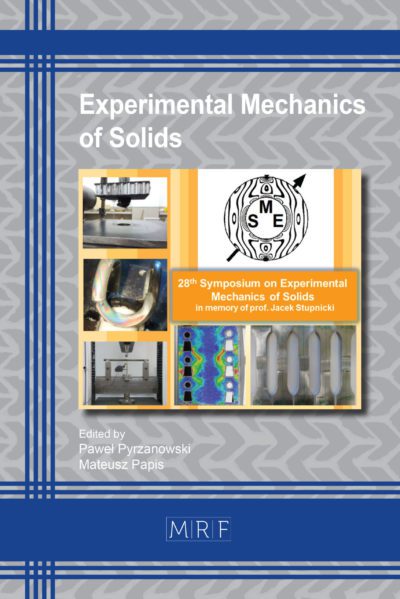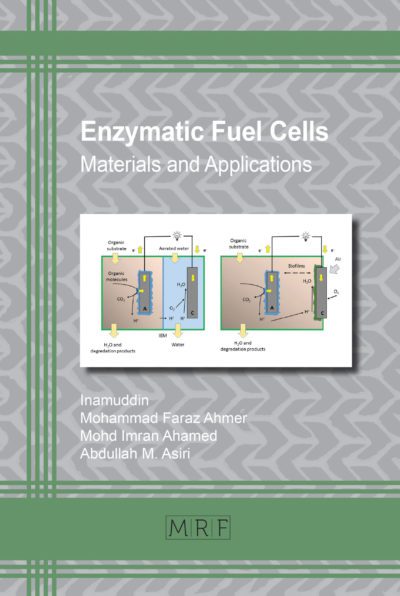Development of a 3D printer optimized for rapid prototyping with continuous fiber fabrication technology
Matteo Benvenuto, Enrico Lertora, Chiara Mandolfino, Luigi Benvenuto, Alberto Parmiggiani, Mirko Prato, Marco Pizzorni
download PDFAbstract. In the industrial field, Additive Manufacturing is a production concept that is increasingly gaining ground. The secret of its success lies in its definition: being able to produce an object by the progressive deposition of material instead of its removal as for the traditional machining. In this way, problems such as waste quantities, complex geometries and machining changes are greatly reduced, making these processes particularly useful and effective for rapid prototyping and the production of small series of objects. This experimental work examines the changes made to a 3D printer initially set up for the use of polymeric materials with Fused Deposition Modelling technology. Going into more detail, this machine was modified in a manner that would make it compatible with the introduction of polymer filaments reinforced with continuous carbon fiber according to the main principles of Continuous Fiber Fabrication technology. The changes made also involved electronics and informatics so that the printer could be easily operated through the platform.
Keywords
Additive Manufacturing, Material Extrusion, Composites
Published online 9/5/2023, 10 pages
Copyright © 2023 by the author(s)
Published under license by Materials Research Forum LLC., Millersville PA, USA
Citation: Matteo Benvenuto, Enrico Lertora, Chiara Mandolfino, Luigi Benvenuto, Alberto Parmiggiani, Mirko Prato, Marco Pizzorni, Development of a 3D printer optimized for rapid prototyping with continuous fiber fabrication technology, Materials Research Proceedings, Vol. 35, pp 163-172, 2023
DOI: https://doi.org/10.21741/9781644902714-20
The article was published as article 20 of the book Italian Manufacturing Association Conference
![]() Content from this work may be used under the terms of the Creative Commons Attribution 3.0 license. Any further distribution of this work must maintain attribution to the author(s) and the title of the work, journal citation and DOI.
Content from this work may be used under the terms of the Creative Commons Attribution 3.0 license. Any further distribution of this work must maintain attribution to the author(s) and the title of the work, journal citation and DOI.
References
[1] S. D. Nath and S. Nilufar, “An overview of additive manufacturing of polymers and associated composites,” Polymers, vol. 12, no. 11. 2020. http://doi.org/10.3390/polym12112719
[2] D. L. Bourell, “Perspectives on Additive Manufacturing,” Annual Review of Materials Research, vol. 46. 2016. http://doi.org/10.1146/annurev-matsci-070115-031606
[3] O. Abdulhameed, A. Al-Ahmari, W. Ameen, and S. H. Mian, “Additive manufacturing: Challenges, trends, and applications,” Advances in Mechanical Engineering, vol. 11, no. 2, 2019. http://doi.org/10.1177/1687814018822880
[4] A. Paolini, S. Kollmannsberger, and E. Rank, “Additive manufacturing in construction: A review on processes, applications, and digital planning methods,” Additive Manufacturing, vol. 30. 2019. http://doi.org/10.1016/j.addma.2019.100894
[5] M. Salmi, “Additive manufacturing processes in medical applications,” Materials, vol. 14, no. 1. 2021. http://doi.org/10.3390/ma14010191
[6] G. Liu et al., “Additive manufacturing of structural materials,” Materials Science and Engineering R: Reports, vol. 145. 2021. http://doi.org/10.1016/j.mser.2020.100596
[7] Y. Zheng, W. Zhang, D. M. B. Lopez, and R. Ahmad, “Scientometric analysis and systematic review of multi-material additive manufacturing of polymers,” Polymers, vol. 13, no. 12. 2021. http://doi.org/10.3390/polym13121957
[8] S. Hasanov et al., “Review on additive manufacturing of multi-material parts: Progress and challenges,” Journal of Manufacturing and Materials Processing, vol. 6, no. 1. 2022. http://doi.org/10.3390/jmmp6010004
[9] A. El Moumen, M. Tarfaoui, and K. Lafdi, “Additive manufacturing of polymer composites: Processing and modeling approaches,” Compos B Eng, vol. 171, pp. 166–182, Aug. 2019. http://doi.org/10.1016/j.compositesb.2019.04.029
[10] D. K. Rajak, D. D. Pagar, R. Kumar, and C. I. Pruncu, “Recent progress of reinforcement materials: A comprehensive overview of composite materials,” Journal of Materials Research and Technology, vol. 8, no. 6, 2019. http://doi.org/10.1016/j.jmrt.2019.09.068
[11] M. Galati, M. Viccica, and P. Minetola, “A finite element approach for the prediction of the mechanical behaviour of layered composites produced by Continuous Filament Fabrication (CFF),” Polym Test, vol. 98, 2021. http://doi.org/10.1016/j.polymertesting.2021.107181
[12] D. Jiang and D. E. Smith, “Anisotropic mechanical properties of oriented carbon fiber filled polymer composites produced with fused filament fabrication,” Addit Manuf, vol. 18, 2017. http://doi.org/10.1016/j.addma.2017.08.006
[13] M. Pizzorni, E. Lertora, and A. Parmiggiani, “Adhesive bonding of 3D-printed short- and continuous-carbon-fiber composites: An experimental analysis of design methods to improve joint strength,” Compos B Eng, vol. 230, 2022. http://doi.org/10.1016/j.compositesb.2021.109539
[14] M. Araya-Calvo et al., “Evaluation of compressive and flexural properties of continuous fiber fabrication additive manufacturing technology,” Addit Manuf, vol. 22, 2018. http://doi.org/10.1016/j.addma.2018.05.007
[15] H. Oberlercher et al., “Additive manufacturing of continuous carbon fiber reinforced polyamide 6: The effect of process parameters on the microstructure and mechanical properties,” in Procedia Structural Integrity, Elsevier B.V., 2021, pp. 111–120. http://doi.org/10.1016/j.prostr.2021.12.017
[16] S. M. F. Kabir, K. Mathur, and A. F. M. Seyam, “A critical review on 3D printed continuous fiber-reinforced composites: History, mechanism, materials and properties,” Composite Structures, vol. 232. 2020. http://doi.org/10.1016/j.compstruct.2019.111476
[17] Information on https://www-objects.markforged.com/craft/materials/CompositesV5.2.pdf
[18] D. Song, A. M. C. Baek, J. Koo, M. Busogi, and N. Kim, “Forecasting warping deformation using multivariate thermal time series and k-nearest neighbors in fused deposition modeling,” Applied Sciences (Switzerland), vol. 10, no. 24, 2020. http://doi.org/10.3390/app10248951
[19] C. Casavola, A. Cazzato, D. Karalekas, V. Moramarco, and G. Pappalettera, “The effect of chamber temperature on residual stresses of FDM parts,” in Conference Proceedings of the Society for Experimental Mechanics Series, Springer Science and Business Media, LLC, 2019, pp. 87–92. http://doi.org/10.1007/978-3-319-95074-7_16
[20] Information on https://docs.duet3d.com/Duet3D_hardware/Duet_3_family/Duet_3_ Mainboard_6HC_Hardware_Overview
[21] Information on https://docs.duet3d.com/en/How_to_guides/Wiring_your_Duet_3
[22] ISO 527-4, “International Standard International Standard – ISO 527-4,” Iso, vol. 2012, 2012.
[23] R. Maier, S. G. Bucaciuc, and A. C. Mandoc, “Reducing Surface Roughness of 3D Printed Short-Carbon Fiber Reinforced Composites,” Materials, vol. 15, no. 20, 2022. http://doi.org/10.3390/ma15207398.

































